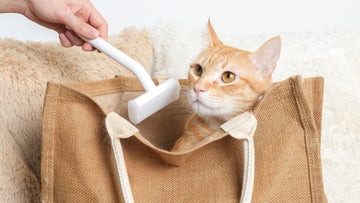How Often Should You Really Use a Deshedding Tool?
Regular grooming is essential for maintaining the health and appearance of your pet's fur. For owners of short-haired cats, using a deshedding tool can significantly reduce the amount of loose hair and maintain the cat's coat. However, the frequency of use can vary based on several factors including breed, health, and environmental conditions. This article explores the optimal frequency for using a deshedding tool, especially focusing on short-haired cats.
Understanding the Basics of Deshedding
Before diving into frequency, it's important to understand what a deshedding tool does and why it's beneficial for short-haired cats:
- Reduces shedding: By removing loose undercoat fur, it decreases the overall amount of hair your cat sheds indoors.
- Improves coat health: Regular use helps distribute natural skin oils across the fur, improving coat sheen and health.
- Decreases hairballs: Especially in cats, reducing loose fur can mean fewer hairballs.
Optimal Frequency for Short-Haired Cats
Short-haired cats, though having less fur than their long-haired counterparts, shed almost year-round. The following guidelines help determine how often to use a deshedding tool based on various factors:
Seasonal Variations
- Spring and Fall: These are peak shedding seasons. It's advisable to use the deshedding tool up to twice a week during these times.
- Winter and Summer: Shedding decreases but doesn't stop. Once a week is sufficient for these seasons.
Temperature and Indoor Climate
- Warmer climates: Cats may shed more in warmer conditions. More frequent grooming might be necessary.
- Controlled indoor temperatures: Cats living in homes with consistent artificial heating or cooling may have less pronounced seasonal shedding, requiring steady grooming throughout the year.
Considering Cat Breeds
- Individual breed needs: Some breeds, like the Siamese, naturally shed less and might require less frequent deshedding.
- Health conditions: Cats with skin issues or other health concerns might need adjustments to their grooming schedule.
Maintaining Your Deshedding Routine
Consistency is key in grooming. By establishing a routine, you help your pet adapt to grooming, making the process smoother and more effective. Keep track of the shedding, and adjust the frequency as needed based on your observations and changes in the environment.
- Monitor the shedding: Keep an eye on the amount of hair shed and adjust the grooming frequency accordingly.
- Consult a veterinarian: If you notice any changes in your cat’s coat or skin health, consult a professional to tailor the grooming routine as needed.
Maintaining a regular grooming schedule not only keeps your pet looking good but also contributes to their overall health, reducing the risk of hairballs and skin diseases. Understand your pet's needs, and adjust your approach to deshedding as those needs change over time.


